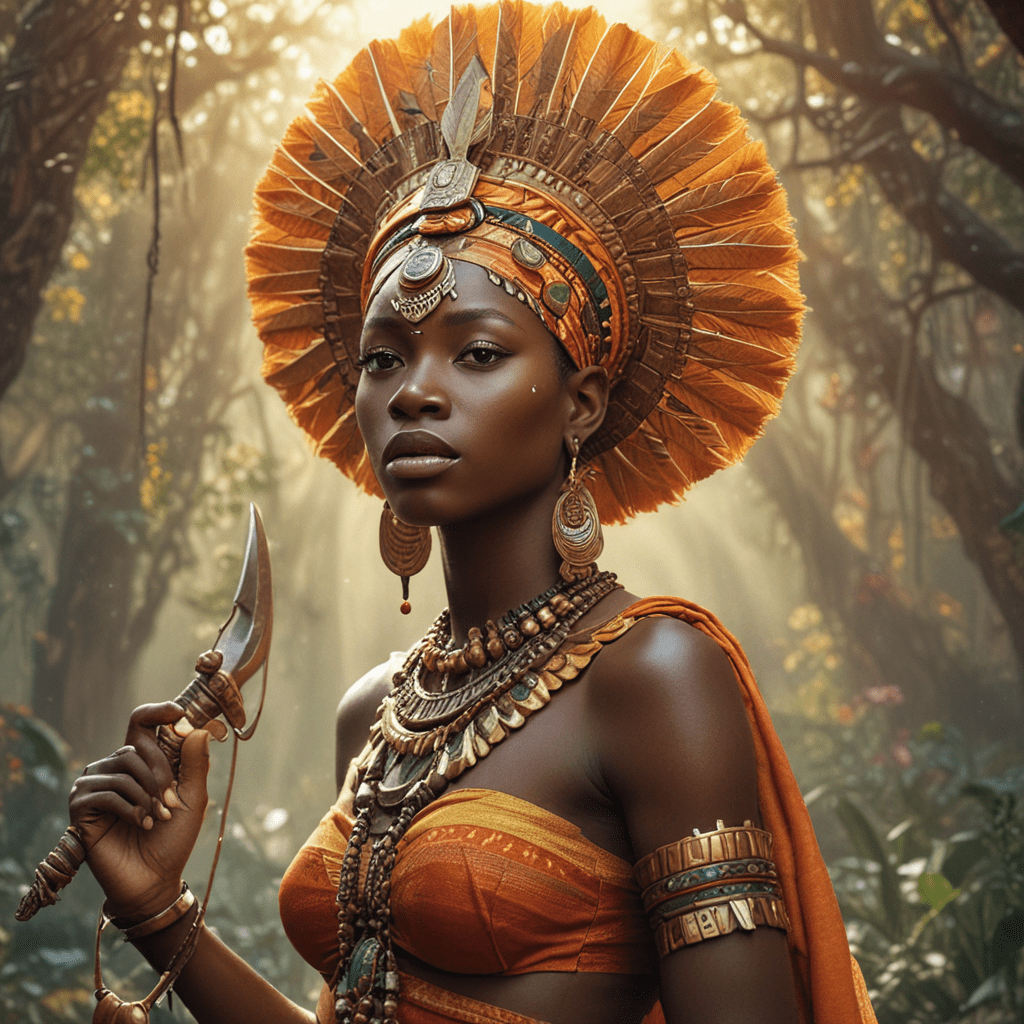1. Red: The Color of Blood, Fire, and War
In the vibrant tapestry of African mythologies, colors hold profound significance, each carrying a complex web of meanings and associations. Among these, red emerges as a potent symbol, commanding attention and evoking a range of emotions.
As the color of blood, red encapsulates the essence of life and its fragility. It represents the sacrifices made in battle, the passion that drives heroes, and the bloodshed that stains the pages of ancient legends. The crimson hue of fire, too, finds its place in African myths, signifying both the transformative power of destruction and the warmth of a communal hearth.
2. Black: The Color of Night, Evil, and Death
In contrast to the vibrancy of red, black evokes a sense of mystery and foreboding. It is the color of night, concealing secrets and harboring danger. In many African mythologies, black is associated with evil spirits, shadowy creatures that lurk in the darkness, seeking to harm the unwary. As the color of death, black signifies the final journey, the transition from the realm of the living to the land of ancestors.
3. White: The Color of Purity, Peace, and Rebirth
White, on the other hand, radiates with an aura of purity and innocence. It symbolizes the beginning of new life, the cleansing waters of rivers, and the promise of a fresh start. In African myths, white is often associated with divine beings, celestial realms, and the wisdom gained through spiritual purification. It represents the hope for a brighter future, a world free from darkness and strife.
4. Blue: The Color of Water, Spirituality, and Healing
The tranquil depths of blue evoke the vastness of the ocean and the serenity of flowing rivers. In African mythologies, blue is imbued with spiritual significance, representing the connection between the physical and supernatural worlds. It is the color of healers, who possess the knowledge to mend both body and soul. Blue also holds the promise of abundance, as it is associated with the life-giving rains that nourish the land.
5. Green: The Color of Nature, Healing, and Fertility
Green, the vibrant hue of nature, represents the interconnectedness of all living things. It symbolizes the healing power of plants, the promise of new growth, and the fertility of the earth. In African mythologies, green is often associated with forest spirits, creatures that embody the wisdom of the natural world. It is the color of hope, abundance, and the enduring cycle of life, death, and rebirth.
6. Yellow: The Color of the Sun, Gold, and Wealth
The radiant hue of yellow reflects the brilliance of the sun, the source of warmth and sustenance. In African mythologies, yellow symbolizes wealth and prosperity, as it is associated with the golden metal and the abundance it brings. It is also a color of joy, optimism, and creativity, representing the vibrant energy that flows through the universe.
7. Orange: The Color of Joy, Abundance, and Creation
Orange, a blend of red and yellow, embodies the joyous spirit of life. It is the color of celebration, abundance, and the transformative power of creation. In African mythologies, orange is associated with fertility, as it resembles the ripeness of fruits and the promise of a bountiful harvest.
8. Purple: The Color of Royalty, Wisdom, and Spirituality
Purple, a regal hue, represents the highest levels of society. In African mythologies, it is associated with kings, queens, and the elite who possess wisdom, power, and spiritual insight. Purple also symbolizes mystery and the connection to the divine, as it is often associated with the cosmic realms.
9. Brown: The Color of the Earth, Strength, and Stability
Brown, the earthy hue of the soil, reflects the stability and groundedness of the natural world. In African mythologies, brown represents the earth, the source of life and sustenance. It is also associated with strength, resilience, and the enduring bonds of family and community.
10. Indigo: The Color of Intuition, Insight, and Wisdom
Indigo, a deep and enigmatic hue, evokes a sense of intuition and inner knowing. In African mythologies, it is associated with wisdom, insight, and the ability to connect with the spiritual realms. Indigo is a color of mystery and introspection, as it represents the hidden depths of the human soul.
FAQs
Q: What is the significance of colors in African mythology?
A: Colors in African mythology carry deep symbolic meanings, representing various aspects of life, nature, and the spiritual realm. They are used to convey emotions, depict characters, and unravel the complexities of the human experience.
Q: What are some common colors found in African mythology?
A: Common colors in African mythology include red, black, white, blue, green, yellow, orange, purple, brown, and indigo. Each color holds a distinct meaning and is associated with specific elements, concepts, or deities.
Q: How do colors influence the interpretation of African myths?
A: Colors provide a visual framework for understanding African myths. They enhance the narrative, add depth to characters, and evoke emotions that connect readers to the stories on a sensory level. By deciphering the symbolism of colors, one can gain a deeper appreciation for the complexities of African mythology.


